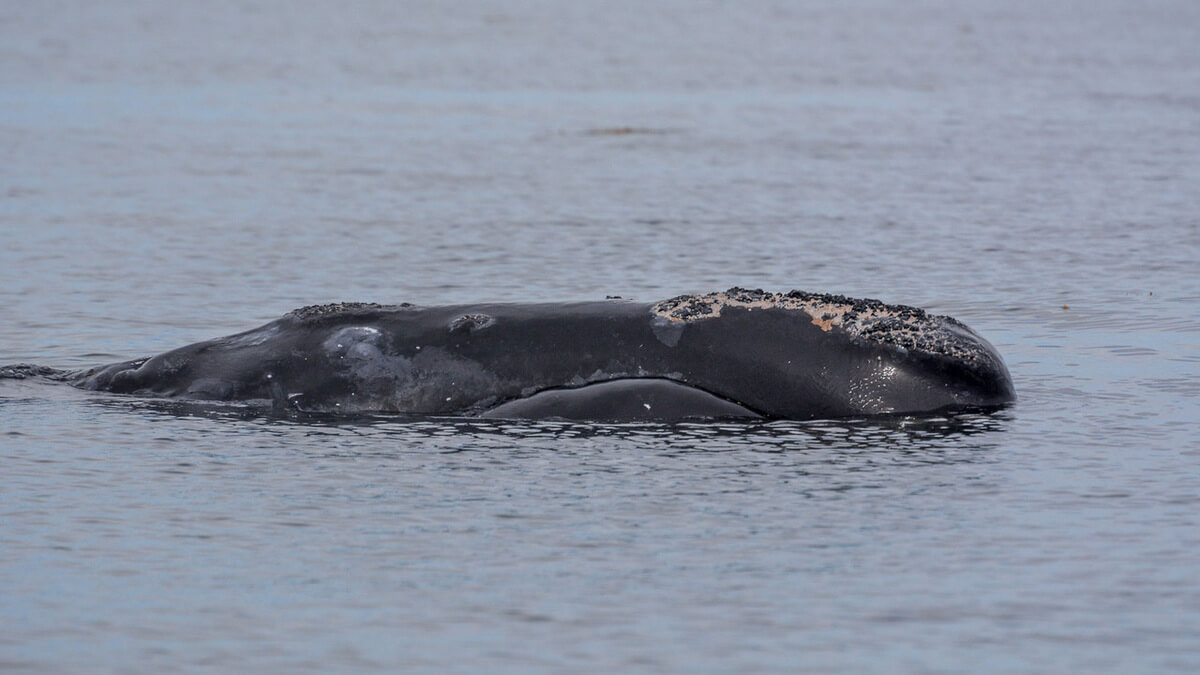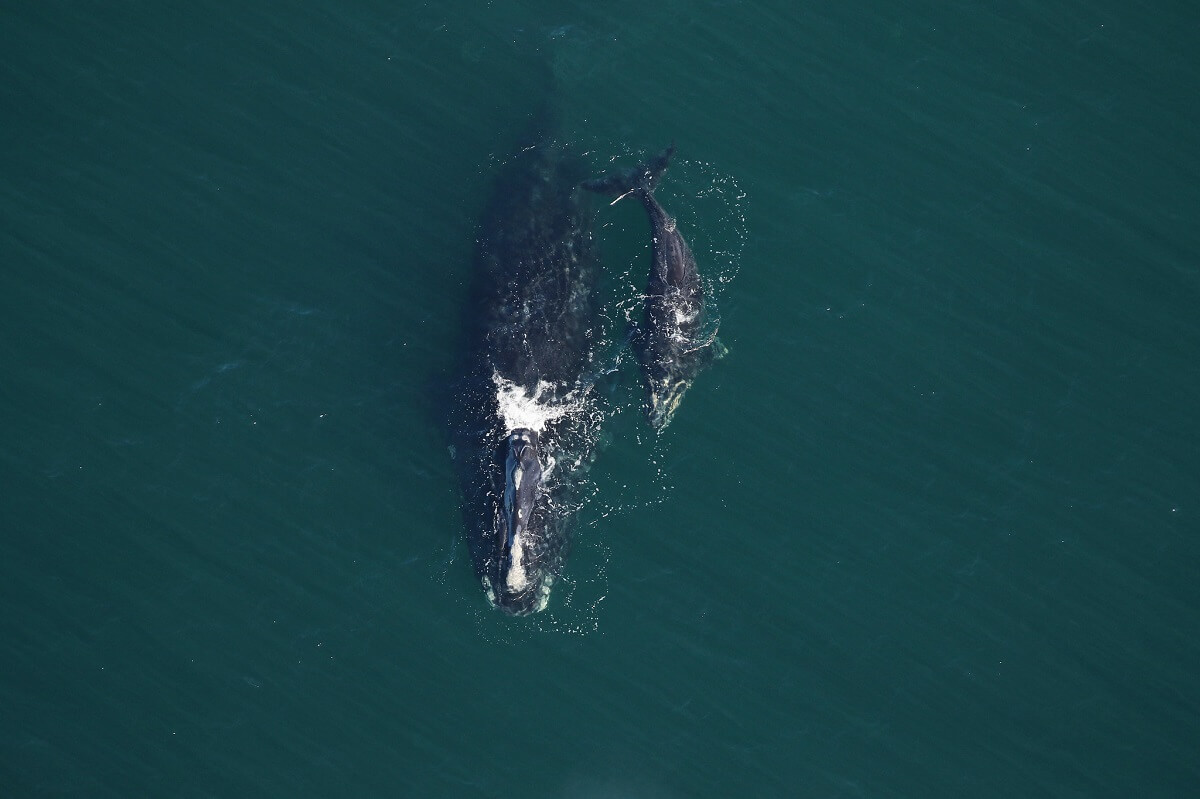Between entanglements in fishing gear, ship strikes and climate change, the past few decades have been rough for the North Atlantic right whale. Scientists at St Andrews University in the UK recently studied the cumulative effects of these stressors on the health and survival of this endangered whale. They concluded that its survival was mainly influenced by entanglements and collisions, as well as variations in the abundance of prey in its environment.
To reach these conclusions, the researchers analyzed data collected from 729 North Atlantic right whales between 1970 and 2020. Using a model that evaluates the cumulative effects of various stressors (anthropogenic and non-anthropogenic), the research team was able to establish that the fitness level of right whales was trending upward until 1990, before declining and stabilizing around the 2000s. For the past decade, however, the health of right whales has entered a steady decline.
According to this study, entanglements in fishing gear and collisions with ships are the main stressors influencing right whale health. As these events have an instantaneous effect on the animals, the consequences, such as injury or mortality, are more easily measurable.
Distributed between US and Canadian waters, the global population of North Atlantic right whales currently numbers fewer than 350 individuals. Since 1980, the species has been considered endangered by the Committee on the Status of Endangered Wildlife in Canada (COSEWIC). Anthropogenic stressors that have repercussions on these whales are placing the species’ survival in jeopardy.
Females and juveniles
Researchers believe that the probability that a female will reproduce is directly linked to her chances of survival. For a whale in good health, reproductive success is likely higher, as are the chances that her offspring will survive. Conversely, a whale that has suffered collisions and/or entanglements and whose energy level is rather low will not enjoy the same reproductive success and the chances of survival of its offspring will also be lower.
Indeed, when a whale becomes entangled in fishing gear, its mobility and ability to feed are compromised, causing it to grow weaker. Females must already draw on their energy reserves to be able to reproduce and bring a calf to term. It is therefore an added challenge to do so when they find themselves in this type of predicament! If, against all odds, the female manages to give birth, her already very low energy level will continue to diminish as she nurses her young, an activity that demands a great deal of energy.
For collisions between whales and ships, the same principle can be observed: if the female’s energy is spent healing her wounds, she will have less energy to reproduce and accompany her offspring.
Other studies have found significant quantities of glucocorticoids in entangled whales. Produced naturally by the body, this hormone is secreted in the animal during stressful situations such as avoidance of prey, intense weather conditions, as well as collisions and entanglements. If present in excessive quantities, it can have a negative impact on reproduction.
The allostatic load experienced by juveniles is also believed to make them more vulnerable to stressors present in their environment. The allostatic load refers to the long-term stress perceived by the individual due to the energy it must expend to adapt to its new environment. Young whales are therefore highly sensitive to their environment and the increased presence of vessels and fishing gear only magnifies this vulnerability.
A question of abundance
It would also seem that the abundance of prey in the right whale’s environment influences its state of health and, indirectly, its survival, mention the scientists from the University of St Andrews. Once again, limited food availability likely has a greater effect on females, as they need energy to reproduce and give birth the following year. A lack of food can therefore potentially jeopardize the survival of both the female and her calf. For periods of lower prey abundance, previous studies noted that right whale reproductive success was lower and mortality from entanglements and collisions was higher.
This fluctuation in prey abundance may be due in part to climate change, which forces this species’ prey to migrate to more suitable environments. As a result, right whales will also have to shift their range to feed, a phenomenon that is already being observed in the North Atlantic. Individuals therefore find themselves in areas where the risk of collisions and entanglements is higher due to heavier shipping traffic and increased fishing intensity.
However, the research team clarifies its comments: even if this study provides insight into the impact of entanglements and ship strikes on the health of North Atlantic right whales, further analyses will be needed to better understand the dynamics between anthropogenic stressors and this endangered whale.
Between anxiety and hope
Since the start of 2023, seven right whales have already been found entangled or dead in the North Atlantic, a rather high figure compared to the same period last year.
On the other hand, solutions already exist to prevent and reduce collisions and entanglements. It is by taking prompt action on the factors having a near-term impact on North Atlantic right whales that the latter will be able to better adapt to the long-term changes taking place in their environment, conclude the scientists responsible for the study.








